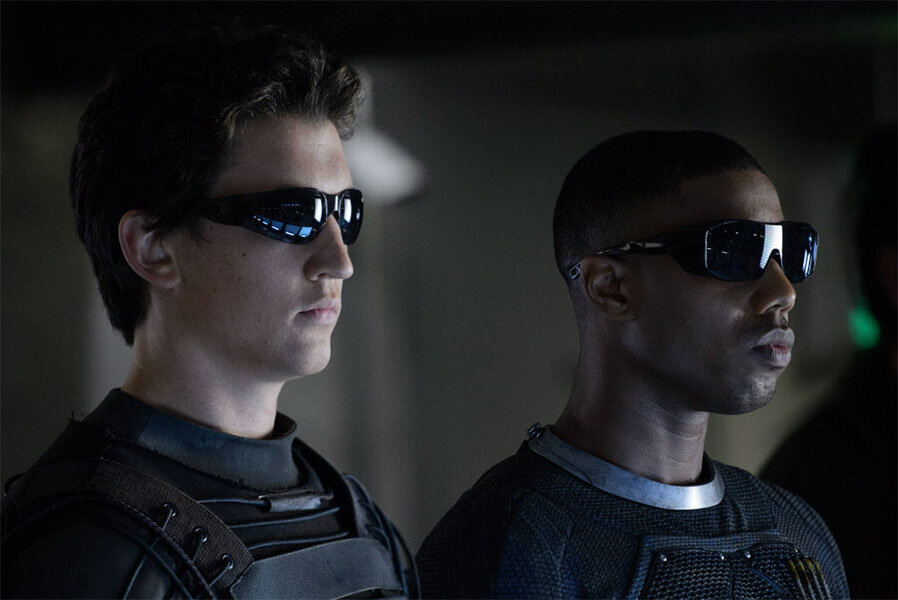'Fantastic Four': The movie is an experiment that didn't gel
Loading...
Joining Spider-Man in the annals of dizzyingly rapid reboots, Fox's second stab at "Fantastic Four" comes just eight years after the first try and its sequel, which didn't set the bar inordinately high. Yet if this latest version, with a significantly younger cast (one's tempted to call it "Fantastic Four High"), clears that threshold, it's just barely, drawing from a different source to reimagine the quartet's origins without conspicuously improving them. All told, the movie feels like a protracted teaser for a more exciting follow-up that, depending on whether audiences warm to this relatively low-key approach, might never happen.
Where many recent superhero movies have risked overstaying their welcome, "Fantastic Four," at 100 minutes, actually feels a tad rushed at the end, with a hasty climax that nevertheless produces some solid moments – at least a few of which, given the slow pace initially, probably should have come at least a half-hour sooner. Instead, filmgoers are treated to a lot of science, with the central characters gazing intently into computer screens.
Using elements from the original Stan Lee-Jack Kirby comics as well as a 2004 revision of them, "Ultimate Fantastic Four," director Josh Trank – sharing script credit with producer Simon Kinberg (a veteran of the "X-Men" franchise) and Jeremy Slater – goes way back into the group's past. The story thus begins with brilliant science prodigy Reed Richards (played by Miles Teller as a grown-up) back when his biggest problems are getting people to take his teleporter device seriously and experiencing puberty.
Discovered seven years later at a science fair by Dr. Franklin Storm ("The Wire's" Reg E. Cathey), Reed is whisked off to the Baxter Institute, a sort-of science academy and think tank, where he meets Storm's adopted daughter Sue (Kate Mara) and her hotheaded brother Johnny (Michael B. Jordan). Alas, he has to leave behind his longtime buddy Ben Grimm (Jamie Bell), though when Reed decides to put his device to the test, he enlists Ben to join in the enterprise.
Rounding out the group is Victor Von Doom (Toby Kebbell), a former prized pupil of Dr. Storm, lured back to help Reed finish a project in which the mercurial Victor had previously dabbled. The ultimate goal is to use Reed's creation to reach an alternate dimension, potentially providing the resources to cure man's ills, but also bringing with it all the expected perils.
An unscheduled attempt to visit those forbidding environs gives the group its extraordinary powers: Reed the ability to stretch; Johnny to burst into flame and fly; Sue to turn invisible and cast force fields. Ben, meanwhile, is transformed into a brutish rock creature, whose enormous strength has an officious bureaucrat-type (Tim Blake Nelson) practically salivating at its more pragmatic applications.
Alas, it takes a long time before anyone gets around to clobbering much of anything. And because it's hardly a mystery that the heroes will end up united and facing off with Doom, there's a sense of killing time in the early going that's not adequately compensated for by the fate-of-the-world-in-the-balance action sequence that finally ensues. Part of that, frankly, stems from uncertainty as to what exactly Doom's powers are, after a fleeting demonstration of them that feels closer to horror than the superhero genre.
If the original comics were defined in part by the interaction of the characters – from Ben's depression at having become a "monster" to the budding relationship between Reed and Sue to Johnny and Ben's squabbling – those dynamics emerge only fitfully. And while comic book aficionados will likely welcome the seriousness of tone, the near-absence of humor and lengthy emphasis on building the interdimensional portal largely handcuffs the cast, with only a hint, for example, of the ebullience Johnny gleans from his newfound powers.
Technically, the look has improved – starting with the Thing, who loses his shorts but picks up computer-generated size, muscle, and menace that was mostly lacking in the prior incarnation. As for the costumes, much as in the first "X-Men," they're built for utility, with the spacesuit motif offering enough similarities to satisfy all but those who won't settle for anything less than spandex and a big "4" insignia. The collaboration of Marco Beltrami and Philip Glass also yields some intriguing riffs in what ultimately sounds like a pretty conventional score.
Ultimately, Fox's stab at reviving one of its inherited Marvel properties feels less like a blockbuster for this age of comics-oriented tentpoles than it does another also-ran – not an embarrassment, but an experiment that didn't gel. And having seemingly missed twice in trying to get "Fantastic Four" right, the studio, unlike Reed, might want to think seriously before making any more trips back to the drawing board.







